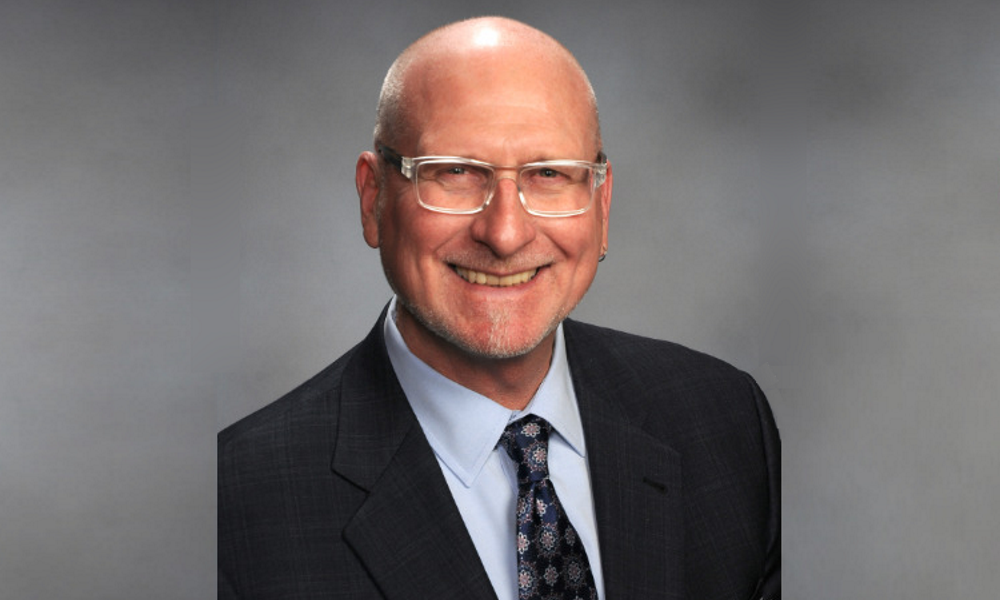After decades working in youth development, including his current role as California’s afterschool czar, Michael Funk has reached retirement age. But he said he won’t be relaxing into his golden years any time soon.
“I don’t plan on retiring for a long time,” Funk said. “I feel like I got 10-20 years left to me.”
 Funk said he has too much work to do, especially now that the state has dramatically increased afterschool funding with the aim of building out a universal program.
Funk said he has too much work to do, especially now that the state has dramatically increased afterschool funding with the aim of building out a universal program.
Funk began his career in San Francisco, where he founded the Sunset Neighborhood Beacon Center. In 2012, the state Department of Education appointed Funk director of the newly-created division to oversee the state’s network of afterschool programs, monitoring quality and ensuring compliance
Since the pandemic, Funk has worked to ensure afterschool programs have the resources and funding they need in a time of unprecedented disruption. The state, recognizing the impact the pandemic has had on the development of kids, has radically upped its funding for afterschool programming.
Now, Funk finds himself with much more work to do, as he is in charge of doling out the largest pot of money in the history of California’s afterschool division and creating a strategy to overhaul how afterschool works in the state.
The conversation
California was already getting more funding for afterschool than all the other states combined. Didn’t the Legislature recently sign a new law for a new pot of afterschool money? How much funding was it?
Yes, the Legislature just signed into the budget a new state program called the Expanded Learning Opportunities Program. It is starting at $1.75 billion and it will go to every school district in the state of California to run afterschool and summer programs. It is projected to grow to $5 billion in three to five years.
That funding is in addition to the state-funded After School Education and Safety (ASES) grant, which is $550 million, and the 21st Century Community Learning Centers federal funding.
If you can imagine, $550 million is already more than all 49 other states combined. Now we’re going to add $1.75 billion to it, which is going to $5 billion. So, it’s a huge commitment by the governor and the Legislature that says that afterschool and summer programs are really important for communities and families and for children in their development.
What does that mean for all these afterschool programs in California, having all this money? Is it a game-changer?
It’s a total game-changer. The administration and the Legislature said it is the intent that these three programs — the previous state program, the federal funding and this new program — represent one comprehensive, universal program. What it means is California is going to have a universal afterschool and summer program and it’s going to be publicly funded.
Wait. Universal afterschool?
Yes, every school district will have afterschool.
How will that work?
I’ve been given the job to administer this and we are in the midst of figuring it out. And there is a lot to still figure out. What schools in those districts will get the money will be a local decision, based on a formula of children who are either in foster care, eligible for free [and] reduced meals, or experiencing homelessness.
There are risks with all this money coming so fast, namely around issues with the quality of programs. That’s what happened in 2006 when the state first got $500 million for afterschool programs. There was a rush of low-quality programs. That’s what led to the Expanded Learning Division. Our job is to avoid the pitfalls of 2006.
So, you’re figuring that out?
Literally, this is the definition of the ship getting pushed into the water and it’s half-built. This is going to be an interesting story to follow. It’s certainly not a story I can tell now because we’re in the middle of it.
The pandemic has surely challenged schools and afterschool programs. Yet, have there been any silver linings to come out of it?
One hundred percent. The recognition of the added value that the field of youth development and what youth workers bring to the educational system is no longer something we’re trying to convince people of — it has been recognized. You hear more people talking about transformative social emotional learning, which is a healing-centered, trauma-informed approach that’s also restorative. People saw expanded learning staff do all these things in a very visible way during the pandemic. They weren’t aware of our strengths in the past. Our work across the state is at a place of visibility and prominence and respect that I wouldn’t have dreamed about two years ago.
With a wave of a magic wand, what would you fix in afterschool?
Community educators would be brought into the teacher preparation pipeline and start to create something new in the entire education system. Students, now caught in a system of oppression, are now seen, known, supported, and prepared for their future.
The details
Title: Director of California’s Expanded Learning Division
Residence: Sacramento
Hobbies: Running, cycling and photography.
Prior employment: Founder and director of San Francisco’s Sunset Neighborhood Beacon Center; Idaho potato farmer; middle school science teacher; high school basketball coach.
Education: Bachelor’s in education from Northwest Nazarene University
The most pressing problem facing afterschool: The nationwide shortage of workers
Favorite part of current job: Working with people who he loves.
Least favorite part of current job: “Dealing with people who are not student-centered and are more concerned about the rules than what our students need and deserve.”






























